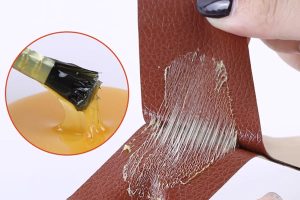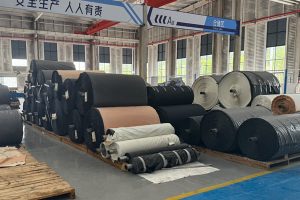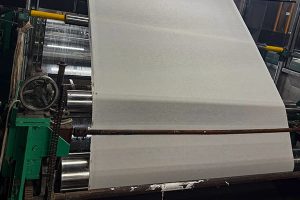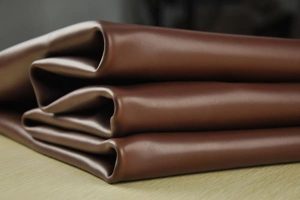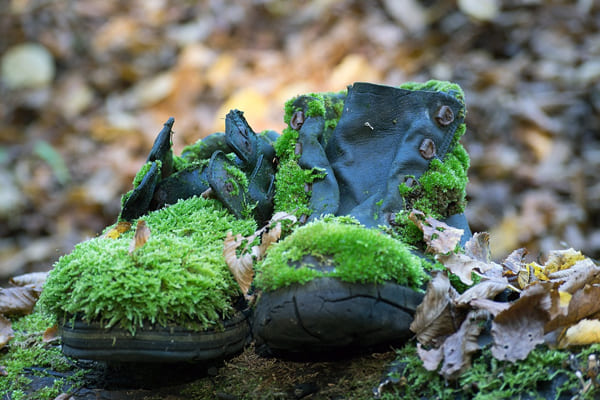
Leather—whether it’s in the form of your favorite jacket, that stylish handbag, or those timeless shoes—is everywhere, and for good reason. It’s durable, it’s luxurious, and let’s face it, it has a certain “cool” factor. But what happens when your beloved leather goods reach the end of their life? Do they simply vanish into the great beyond, leaving the Earth in peace? Not exactly. As tough as leather is on the fashion scene, it turns out it’s even tougher to break down in nature.
So, is leather biodegradable? The short answer is: “It depends”—which is never as satisfying as a straight yes or no. But hey, what’s fashion without a little mystery, right? Let’s unravel the secrets behind leather’s journey from wardrobe staple to… well, landfill resident (hopefully not for too long!). Hold onto your wallets, because this is where sustainability meets style, and the answers might just surprise you.
Leather and the Environment: Can It Break Down Naturally?
Leather, derived from animal hides, is often seen as a durable and long-lasting material used in fashion, furniture, and various other industries. But how does leather interact with the environment once discarded? The natural breakdown of leather depends on several factors, including how it’s treated during production. Traditional leather, when processed with harsh chemicals such as chromium in tanning, can take decades to decompose. These chemicals not only slow down its biodegradability but also introduce pollutants into the soil and water. On the other hand, vegetable-tanned leather, which uses organic materials like tree bark for processing, has a significantly better environmental impact. While it still takes time to break down, vegetable-tanned leather has the potential to decompose more naturally, making it a more eco-friendly option. Thus, the biodegradability of leather is closely linked to the production methods used.
Unpacking Leather’s Lifespan: Is It Truly Biodegradable?
Leather’s lifespan is one of its most valued qualities, as it can last for years without significant wear and tear. However, this durability is a double-edged sword when it comes to environmental concerns. While leather is technically biodegradable because it comes from organic animal hide, the process of tanning, dyeing, and adding protective finishes can significantly alter its natural composition. Chromium-tanned leather, the most common type, does not break down easily and can persist in landfills for many years, releasing toxic substances in the process. On the contrary, naturally tanned leather can degrade faster under the right conditions—exposure to moisture, bacteria, and oxygen—but even this can take several years. Thus, while leather is biodegradable in theory, the reality is far more complex, with many variables influencing its decomposition timeline.
From Style to Sustainability: The Truth About Leather Biodegradability
Leather has long been a symbol of luxury and style, but as sustainability becomes a growing concern, many are questioning whether leather can fit into an eco-friendly lifestyle. The truth about leather’s biodegradability hinges on how it is produced. While leather made from organic processes may eventually biodegrade, the industry’s reliance on chemical-laden tanning methods poses a significant barrier to sustainability. Furthermore, synthetic leathers, which are marketed as animal-free alternatives, often contain plastics and other non-biodegradable materials, further complicating the conversation. Consumers who prioritize sustainability should be informed about the differences between traditionally tanned, vegetable-tanned, and synthetic leathers to make more environmentally responsible choices. In the quest for sustainable fashion, understanding the environmental impact of leather is key to balancing style and ecological responsibility.
Leather in Nature: How Long Does It Take to Decompose?
Leather, derived from animal hides, is technically a natural material, but the process it undergoes in manufacturing—especially tanning—plays a critical role in how long it takes to decompose. Untreated leather, such as vegetable-tanned leather, can take between 10 and 50 years to break down under natural conditions, depending on factors like exposure to moisture, temperature, and microorganisms. However, leather treated with synthetic chemicals, especially chromium tanning, can take much longer to decompose. These treatments preserve the leather for durability and use in products, but they also slow down its natural breakdown process. In landfills, leather is often deprived of oxygen and moisture, further delaying its decomposition. This raises questions about leather’s long-term environmental impact, especially when disposed of improperly.
Eco-Friendly Fashion: Can Leather Be Part of a Biodegradable Future?
As the fashion industry increasingly turns toward sustainability, leather’s role is under the microscope. Traditional leather, especially when treated with harmful chemicals, poses challenges to eco-friendly fashion goals. However, a growing demand for biodegradable materials has led to the rise of eco-conscious alternatives. Vegetable-tanned leather, for instance, offers a more sustainable option as it uses natural tannins derived from plants, making it more biodegradable over time. Furthermore, innovative bio-leathers, crafted from fungi, pineapple leaves, and other plant-based materials, are being explored as alternatives that mimic leather’s properties while being fully biodegradable. To make leather part of a biodegradable future, the industry must focus on cleaner production processes, renewable resources, and end-of-life solutions that align with a circular economy.
Leather's Green Journey: Is It Sustainable and Biodegradable?
The sustainability of leather is a complex issue, tied closely to its production process and environmental impact. On one hand, leather is often considered a byproduct of the meat industry, giving it a level of sustainability by using animal hides that might otherwise go to waste. On the other hand, the tanning process, especially with chrome tanning, involves heavy metals and toxic chemicals that are harmful to the environment and difficult to break down. Vegetable-tanned leather, however, represents a more sustainable and biodegradable option, though it still requires significant water and energy resources during production. The future of leather sustainability lies in innovations like biodegradable, lab-grown leather alternatives and more responsible sourcing practices. With these developments, leather could indeed be part of a greener, more sustainable future.
Conclusion
Leather’s biodegradability and sustainability depend on how it’s made. While traditional leather may take decades to decompose, eco-friendly alternatives like vegetable-tanned or bio-leathers offer a greener future. As consumers, our choices can drive change, supporting leather that balances style with environmental responsibility. In the end, leather’s journey toward sustainability is in our hands—where fashion and eco-consciousness can coexist.


